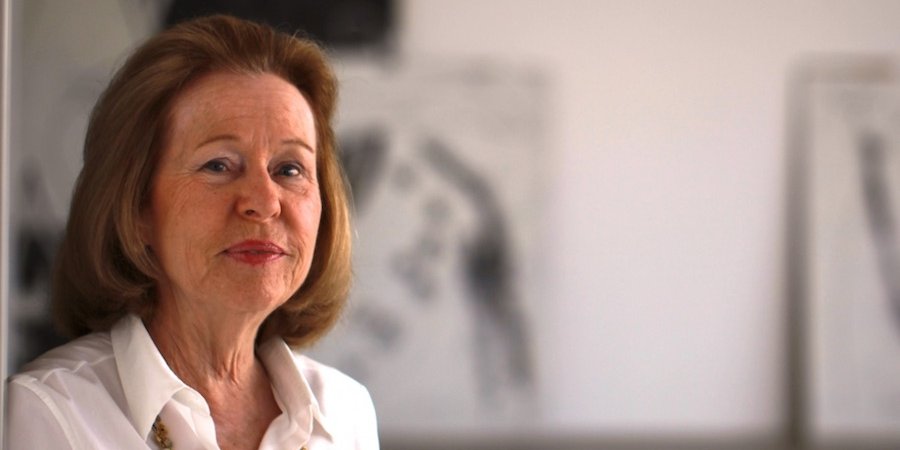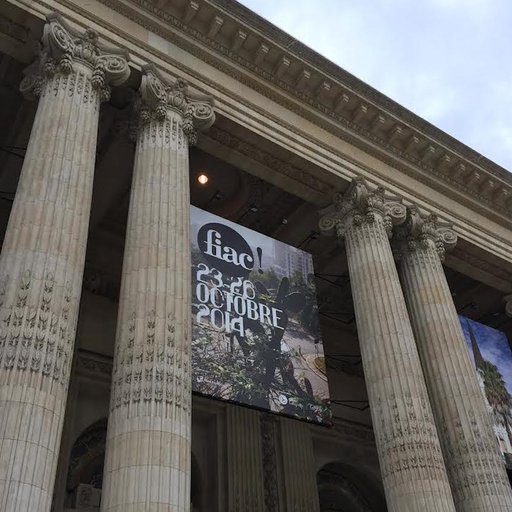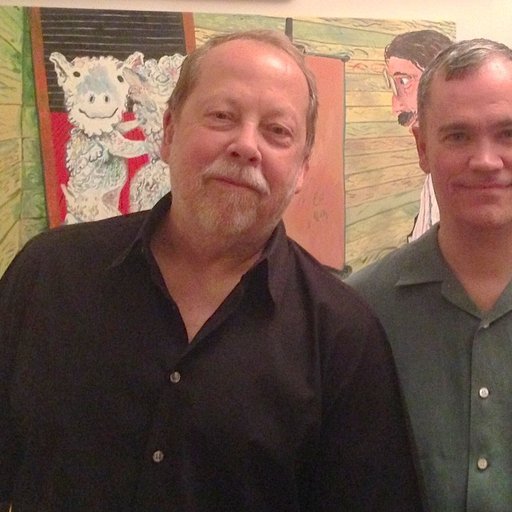Continually listed in the top ranks of Miami’s finest private collections, the 30,000-square-foot de la Cruz Contemporary Art Space in the Design District impresses as a vast repository of new art, with vaulted galleries teeming with paintings, sculptures, and installations by the hottest names of the past decade. But in addition to being a showcase of biennale-ready work—as well as strong holdings in postwar German painting—that rivals the city’s museums, the collection is also as a testament to a powerful civic vision. After all, Rosa de la Cruz and her husband Carlos, the chairman of $1 billion-per-year business empire that has stretched across Coca-Cola, condensed milk, and Anheuser-Busch, hope to use their considerable resources to elevate Miami from its status as a once-a-year art attraction to a true contemporary-art capital.
This month, in time for the latest edition of Art Basel Miami Beach, the de la Cruzes will be unveiling the latest of their much-anticipated annual exhibitions, which used to be held in their private residence but migrated to their art space when it opened in 2009. Called “Beneath the Surface,” it brings together work by 42 artists—mostly male stars recognizable from the evening sales—who blend abstraction and figuration in pursuit of capturing the contemporary American landscape. Artspace editor-in-chief Andrew M. Goldstein spoke to Rosa de la Cruz about the ideas motivating her collection, and how she hopes to raise the cultural bar in Miami.
You grew up in Cuba in the years before Castro came to power. How did you come to the United States?
Both Carlos and I were born in Cuba, and we left when we were 17 and 18 years old because when Castro came in with the Communists the whole family left. We came to the States in 1960, and first we lived in Philadelphia while Carlos was finishing his masters at Wharton, and then he got a job in New York so we lived there for a few years, and then we lived in Madrid for a few years. We came back over in 1975.
When along this timeline did you become so passionate about art and collecting?
The passion for collecting has been in my family for many years. My father was an architect in Havana, and my family and Carlos’s family collected art and had art hanging in our houses in Havana, so we were always exposed to art and we’d talk about art at home a lot. But Carlos and I first started collecting ourselves when we were buying art for the house. Our first work was a Rufino Tamayo, and at first I thought of building a Latin American collection. But then I changed my mind and I decided to focus on contemporary art in general.
Right now we have a very good German art collection and a very good American art collection. We have Christopher Wool and we have Mark Bradford and we have Peter Doig, so we have major works in the current show we have up. But this is something that grew out of a love of art—we never thought of this as a collection and we still don’t think of it as a collection, we see it more as a way of living, and a part of our house. We see the art space as an extension of our home.
The work you collect ranges from big-flavor artists like the postwar German painters and maximalists like assume vivid astro focus to much quieter and contemplative figures like the Cuban-born Felix Gonzalez-Torres, who you collect in depth. What ideas inform the way you frame your collection?
Our collection now is really about the 21st century. We’re buying Dan Colen, Nate Lowman. So our collection has changed completely. We still have works from the past, but our collection is contemporary. And it’s not a Latin American collection either. That doesn’t mean that there aren’t Latin American artists in our collection, but it’s a collection that defines the 21st century, which is very different from the 20th century. Artists are working differently now, like Wade Guyton, whose work is about process, not just pure painting.
We really believe in exposure to new ideas, and that if people don’t see new ideas they get stuck in the 20th century. That’s what’s happening in many places in the United States, where people haven’t moved forward—you really need to move forward to know what’s going on. And you have to see it with your eyes, you can’t just read books or Google. So when people say that the de la Cruz collection is the number one collection in Miami, it’s not because of money, it’s because we really are committed to Miami and art as an intellectual pursuit.
How would you describe your personal taste in art?
I don’t believe that art should fit an agenda. For example, we have a lot of Nate Lowman, Kelley Walker, Wade Guyton—the artists that we love we don’t buy just to buy, you know what I mean? We’re building a real collection, a permanent collection that we hope we can keep in Miami after we die. We don’t want it to be sold or anything—we’re trying to figure out just what we’re going to do in terms of taxes and everything, to see if we can create a foundation. Because we really believe our space is amazing, and we’re committed to Miami, because we believe that if you don’t have the knowledge you’re lost. A lot of people talk but they don’t have the knowledge, and knowledge is power.
You’re known for giving tours of your collection where you display a deep understanding of the work you have on view. How much time out of the day do you spend tending your collection and researching new art?
We do a lot of reading, and Carlos and I were given seven lectures on everything from the Venus of Willendorf and Egyptian art to Baroque art and the Renaissance. So we do know the history of art. And I spend a long time working on the collection and looking and reading and talking to people. That’s why I think it’s important to be aware of new things and new artists and what is happening today, and not just try to fit your own agenda. It’s not my agenda—I’m trying to document the 21st century.
Do you work with a network of curators and art advisors?
I have people, and I like to ask everybody because I feel the more you ask the more you learn. So I’m not shy about asking people what they think of this work, that work. There’s a young woman who lives between California and New York, Meredith Darrow, who helps me a lot. Two eyes are not enough, so I have several eyes. We like to show artists in Miami that no one has seen before.
Do you see yourself as a patron as well as a collector?
Oh, being a patron is one of the most important things. We’ve started so many scholarships and every year we give a lot of money to art education for children. We sponsor one program where 30 students from the School of Visual Arts can attend free college programs over the summer, we do workshops—we’ve spent, I would say, a lot of money. And also if someone wants to throw a party in our art space, for instance, we tell them we don’t charge but the only way they can make a contribution is to make a donation to the one of these charities. We’ve helped so many children over the years it’s amazing, helping to bring culture to over 500 children. Because Miami is too far south—it’s like an island—and they need more exposure.
One of the problems we have here in the United States is the lack of exposure to culture outside of the major cities, and children need to see more contemporary art. So we’ve done trips to New York, we’ve done trips to Princeton, we’ve done trips to Philadelphia, and we don’t only take the children, we take the teachers too. We really have a program that is working, and the reason is that we’re trying to make Miami more of an intellectual city. Art Basel is not enough—Art Basel is great, but it’s only five days.
Today, the talk of Miami’s art community is the schism underway at MOCA North Miami, which is splitting into two entities. Now it’s been announced that 500 of the 700 pieces in its collection will stay with MOCA, while about 200 will be going to the newly formed Institute of Contemporary Art. Over the years, you have donated a trove of artworks to MOCA. What do you make of the situation?
I think it’s great now that the ICA is opening and they’re splitting the collection. I’m not involved with that, but now that we have a new museum that’s going to be here through the generosity of [the real estate developer] Craig Robins I think we’re really gaining a lot, and it’s an amiable way that they’re doing it. It’s a wonderful thing that we’re going to have another museum.
You’ve been bluntly critical of the Miami museum landscape in the past, saying that their party-centric atmosphere turns them into “country clubs,” a situation you called “embarrassing.” What do you think of the health of Miami’s museums in the wake of the most recent developments, and how do you see your private collection coexisting with the public institutions?
You know what? I think it’s getting better and better and better. I’m not as pessimistic anymore—I think Miami is moving forward. Miami is the future. Miami is a frontier town. As for the collections, Miami is not like other places, we don’t really define private and public. Private and public for us are the same. I think of my art space as private and public, and my house as private and public.
























